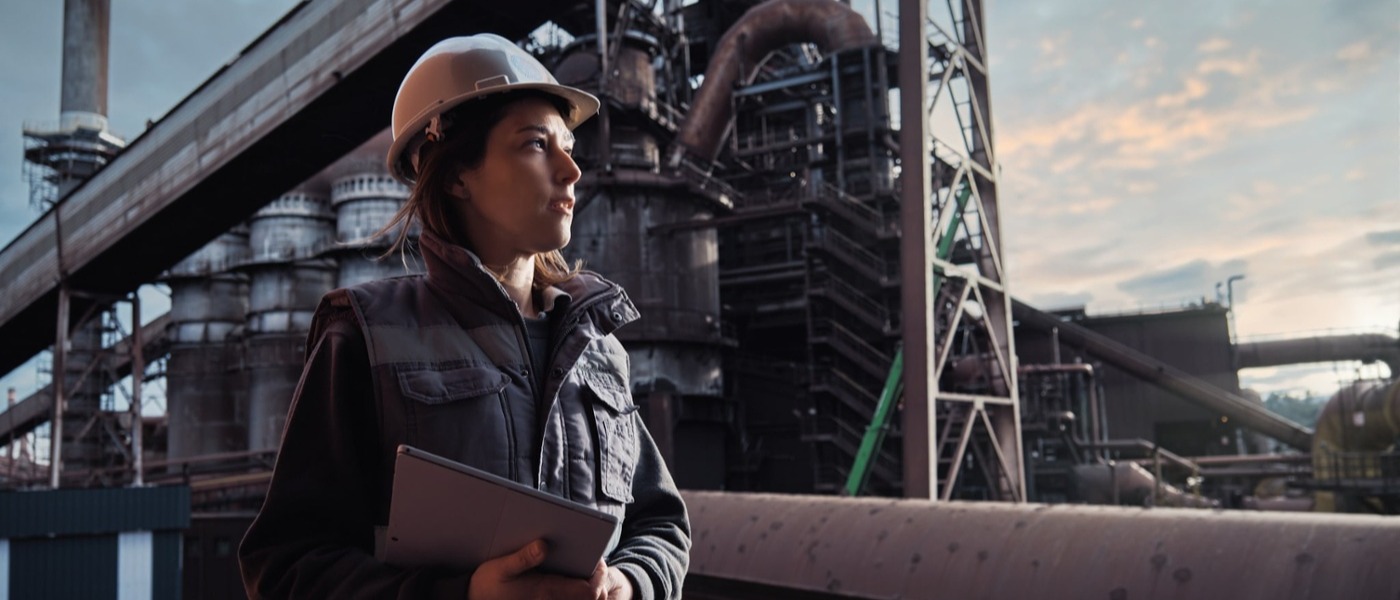As metal 3D printing gains popularity throughout the manufacturing industry, many are beginning to...
As government targets are introduced and public pressure increases, sustainability is something businesses in the manufacturing industry can no longer ignore. But for industries that are essential to almost every part of daily life and are naturally resource or carbon-intensive, how can an issue as large as sustainability be tackled?
We look at sustainability in manufacturing and how 3D printing can help transform the landscape and the future of the industry.
Sustainability in Manufacturing
While sustainability is a concern for almost every industry; it’s a particularly important focus for manufacturing. Between 2000 and 2020, CO2 emissions released by global fossil fuel and combustion processes rose by roughly 35% to 34.07 billion metric tons.
Manufacturing has long been associated with large amounts of waste and energy consumption, often producing end-products that further harm the environment, such as fossil fuel vehicles and non-recyclable goods.
Today, attitudes are changing and businesses are being held accountable more than ever. The future for the manufacturing industry is likely to be resource and carbon-constrained, meaning real change will have to take place.
Concepts such as lean manufacturing have held their place in the manufacturing industry for some time, with waste reduction being a key focal point. However, productivity has always been the primary objective and sustainability has generally taken a backseat. As the pressure to become more sustainable continues to mount, will businesses start moving towards more eco-friendly technologies and business models?
3D Printing and Sustainability
3D printing has the potential to completely reinvent the way parts and equipment are produced.
So, how does this coordinate with sustainability? In general, 3D printing is a more sustainable manufacturing method due to the reasons we’re about to discuss. While there are many benefits to 3D printing, it’s by no means completely sustainable and greenwashing claims need to be avoided.
Less Waste
One of the most beneficial aspects of 3D printing is it produces much less waste than traditional manufacturing techniques.This is because it’s an additive method, rather than subtractive, meaning a part is built by adding material only where it is needed, whereas traditional methods such as CNC machining removes material to form a part.
For most industrial applications, unused metal powder can easily be recycled and used for the next build job. In the case of LPBF 3D printing, over 95% of the unused powder can be reused. Recycling involves a simple sieving process and is therefore much more energy efficient compared to subtractive manufacturing methods, where scrap material must be melted down and reprocessed to create new bar stock.
Local Production
There are also specialised 3D printing services that can locate their machines at your site or a close location. To find out more about this kind of offering, take a look at our subscription service.
3D printing can facilitate local production as the process only requires one machine, production is relatively autonomous and the raw materials are simple.
There are numerous benefits to local production, the first being the less distance the 3D printed parts have to travel, the fewer emissions created during transport.
On top of this, local production also helps the supply chain be more resilient. For example, businesses with a local 3D printing facility were less disrupted by the travel and shipping restrictions during the COVID-19 pandemic.
Efficient Designs
3D printing can create more efficient designs using topology optimisation, increasing the overall sustainability by minimising material usage and energy consumption.
This produces lightweight, high performance parts. This can be particularly beneficial for manufacturing industries such as aerospace and automotive — the lighter the parts used during manufacture, the lighter the end product and therefore less fuel is consumed.
The Future of Manufacturing
So, what does the future of manufacturing look like? Is real sustainability achievable? And how do manufacturers get there?
First and foremost, it’s about a change of attitude — sustainability shouldn’t be seen as a cost that must be offset. Instead, sustainability can be a value differentiator.
Take Tesla as an example. It’s showing sustainability can be successful. By tapping into the future of what the customer wants and what the planet needs, Tesla has just achieved a $1 trillion market value because of this.
Other big-name businesses are also following suit by harnessing the benefits of 3D printing. Renault Group is creating a sustainable automotive production facility where they recycle and retrofit vehicles using 3D printing.
If manufacturers truly embrace sustainable methods and invest in processes such as the circular economy, localised manufacturing and 3D printing, the results will follow. By 2050, additive manufacturing could save up to 90% of the raw material needed for manufacturing, saving resources, reducing emissions and emitting waste.
See How 3D Printing Could Work for You
There’s so much more to discover about metal 3D printing. If you’re looking for the finer details, why not download our helpful guide? We’ll cover everything there is to know about the technologies, from average lead times to design processes. Simply click the link below to download your copy.



